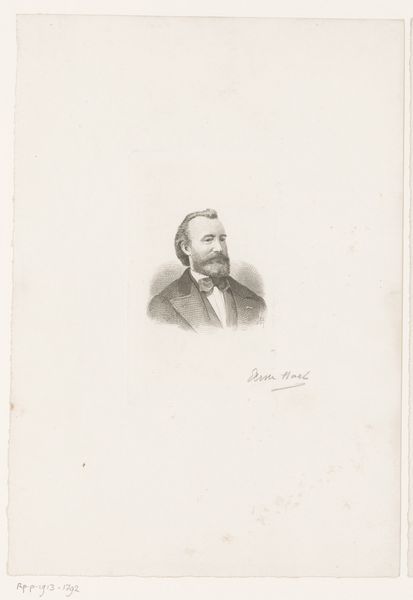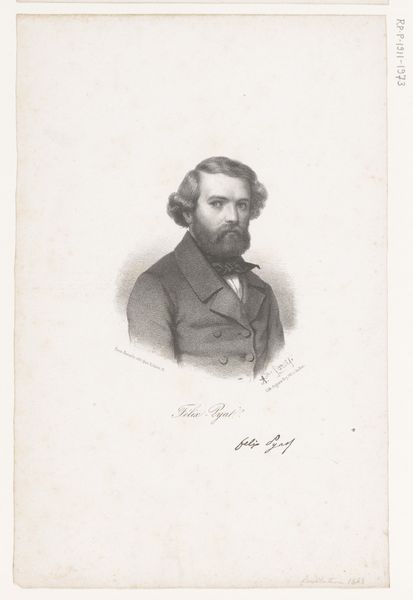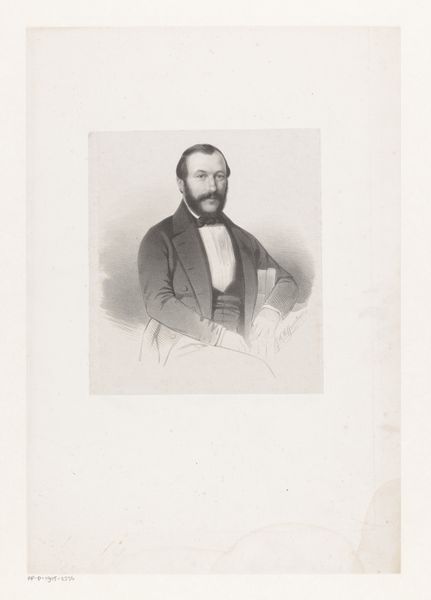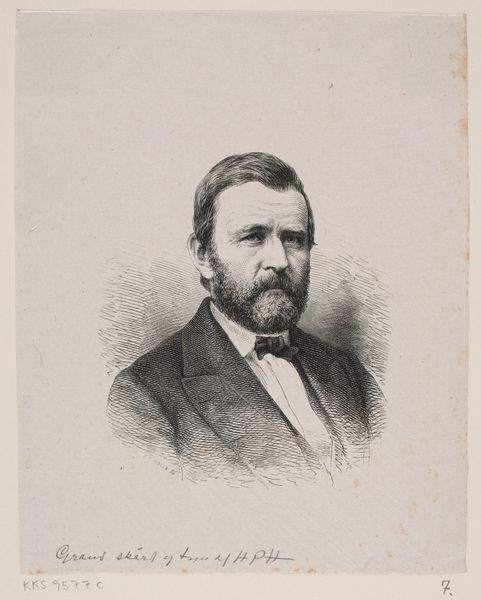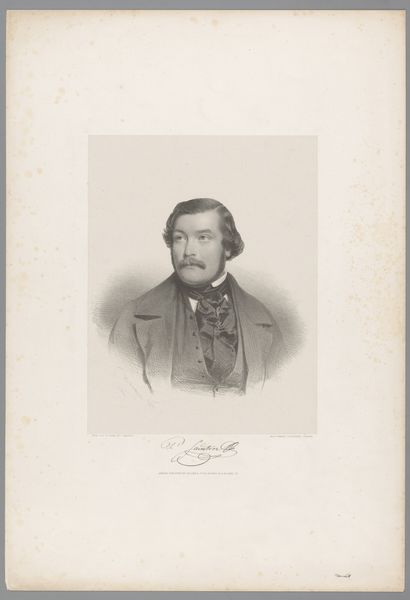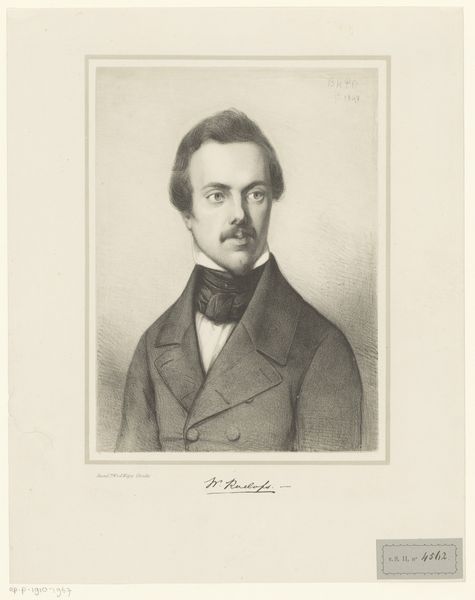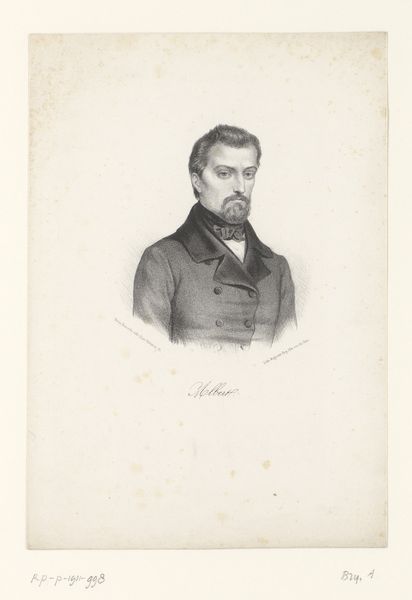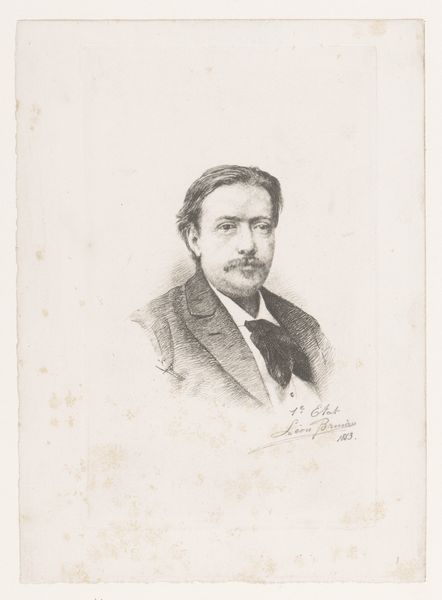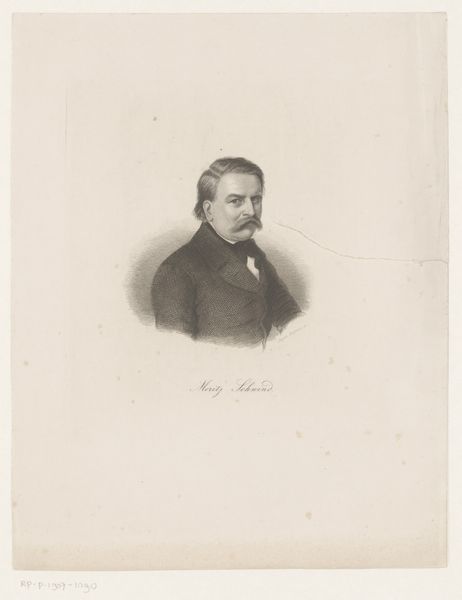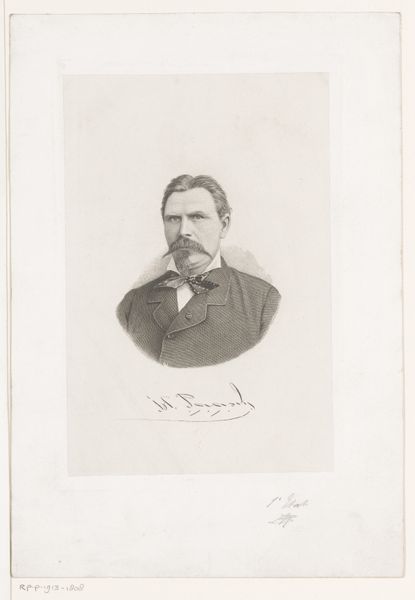
Dimensions: 240 mm (height) x 188 mm (width) (billedmaal)
Curator: This lithograph, created in 1871, is a portrait of Fritz Ferdinand Petersen. He was a curator working with the royal collection at that time, and it really highlights the cultural institutions developing in Europe. Editor: My first impression is one of quiet intensity. The oval framing draws my attention immediately to his face—those striking eyes and prominent mustache practically demand engagement. Curator: Exactly. And knowing he was involved with restoring artworks gives another layer to our viewing experience. What kind of power dynamic existed then for curators? What were the politics around preservation, for instance? These things need exploring. Editor: Certainly. Looking at it purely from an aesthetic angle, I’m captivated by the way the lithographer has used light and shadow to create depth. There is a clear contrast and definition in Petersen's face compared to the softer background behind him. Curator: And we can see this moment coinciding with the romantic and realism art movements of that era, Petersen’s formal attire speaks volumes about societal expectations around respectability for someone in his position, too. The art world's access was extremely restricted at the time. Editor: Agreed. The details in his jacket, even in print, show mastery of conveying textures. It provides not just visual interest but a sense of his tangible presence. Curator: It’s definitely about more than visual skill. The question is, what does he *represent*? Think about issues of social class, privilege. Consider how identities were presented through artwork in that moment of history, and how our perceptions are biased in present times. Editor: Fascinating how a seemingly simple portrait holds all of this potential. Curator: Indeed. Hopefully listeners will consider how this connects to broader historical conditions and social theories. Editor: I will be leaving and thinking about this contrast—between the surface qualities and layers beneath—for a long time.
Comments
No comments
Be the first to comment and join the conversation on the ultimate creative platform.
